This was such an interesting project, I fear this may not be the last crocheted organ you see on this blog.
So for an extra credit project in my Dysphagia class, we were given as one option: "For arts-and-craftsy people, develop a three-dimensional model of portions of the swallowing mechanism. Label the structures and muscles. Be prepared to respond to instructor questions about function. Use your imagination."
How could that not be an invitation for me to crochet a larynx? So here is my step by step process. Warning, if you are triggered by yarn renderings of tendons and muscles, then you may want to stop reading and uh...call a therapist!
So the basic skeletal structures of the larynx were pretty easy:
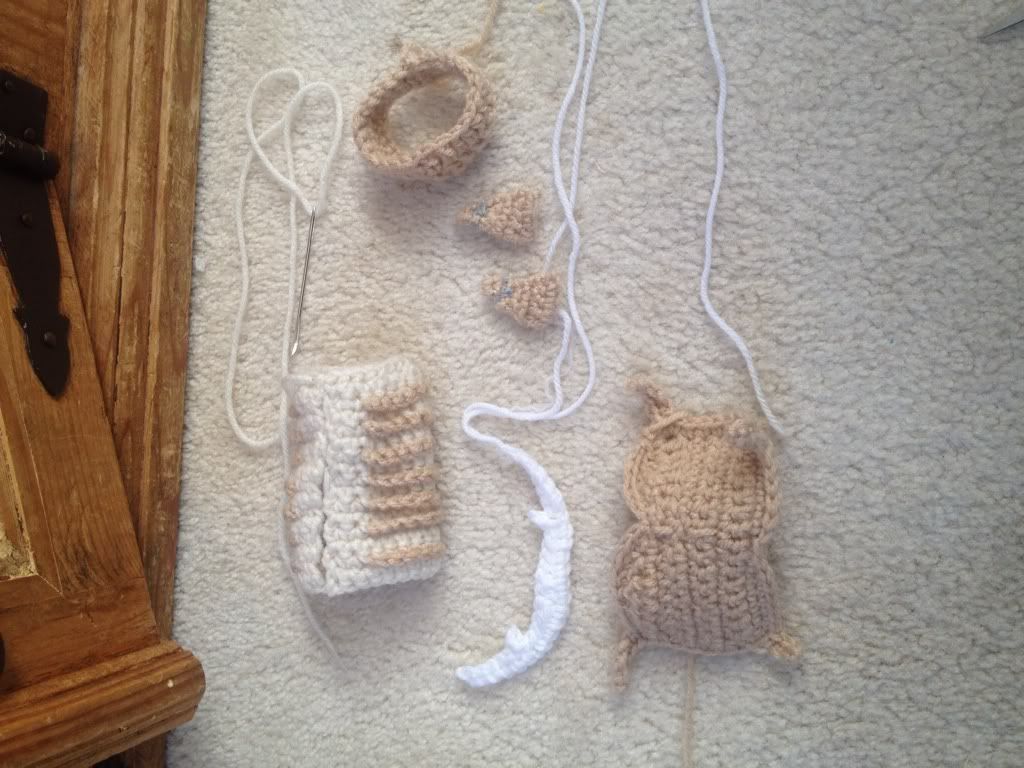 |
| Clockwise from top: Cricoid, Arytenoids (with attached corniculate cartilages), thyroid cartilage, hyoid bone, trachea |
 |
| Cricothyroid joints and Cricoarytenoid joints |
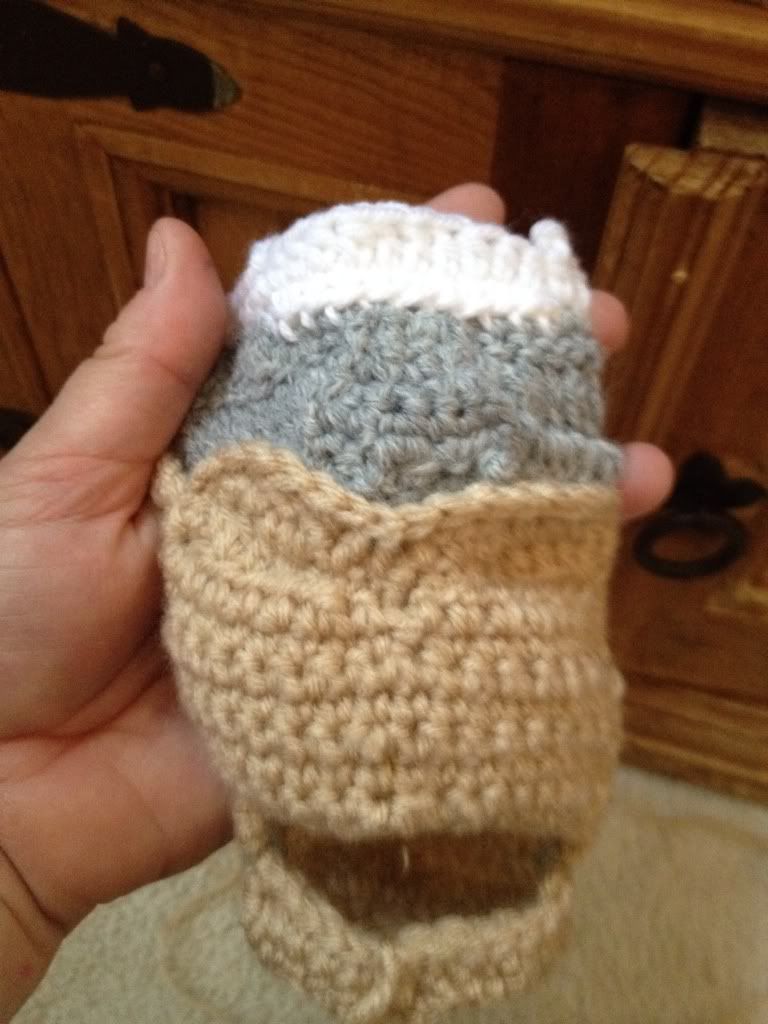 |
| Anterior view |
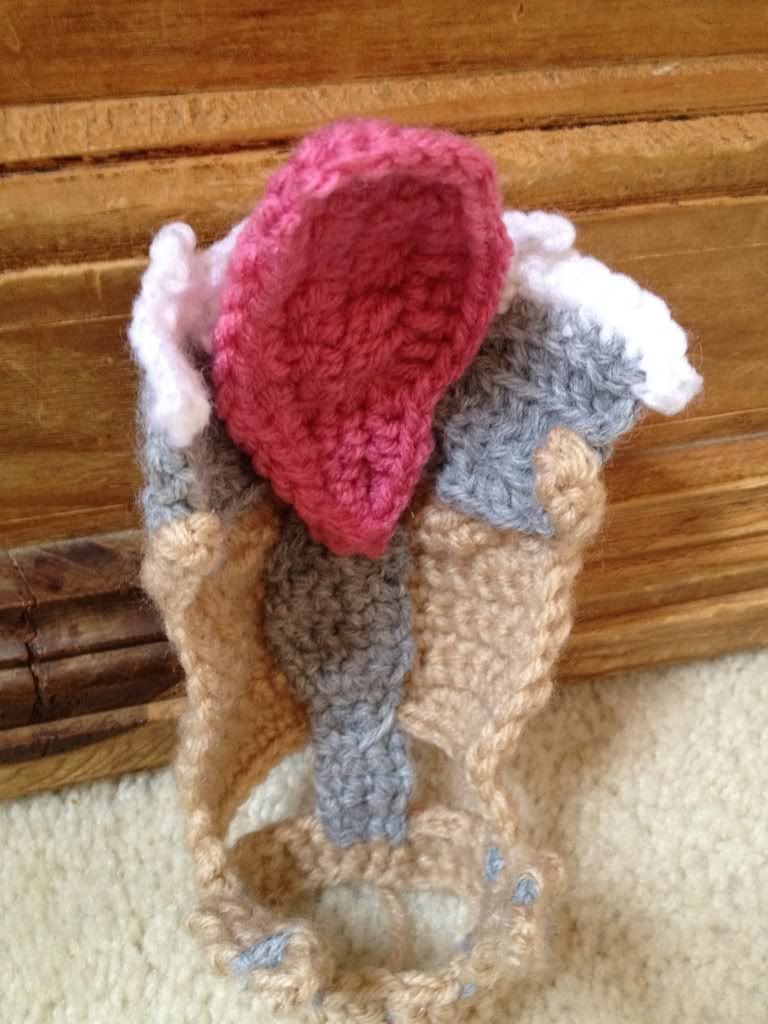 |
| Posterior view |
The cricothyroid muscles and the lateral cricoarytenoid muscles
The transverse arytenoid and the posterior cricoarytenoid muscles are attached
Last but not least, the vocalis (thyroarytenoideus) muscles and the aryepiglottic muscles which become the oblique arytenoid muscles.
A better view of the vocalis muscles and the vocal cords. Yes, my vocal cords are bright orange. Why not?
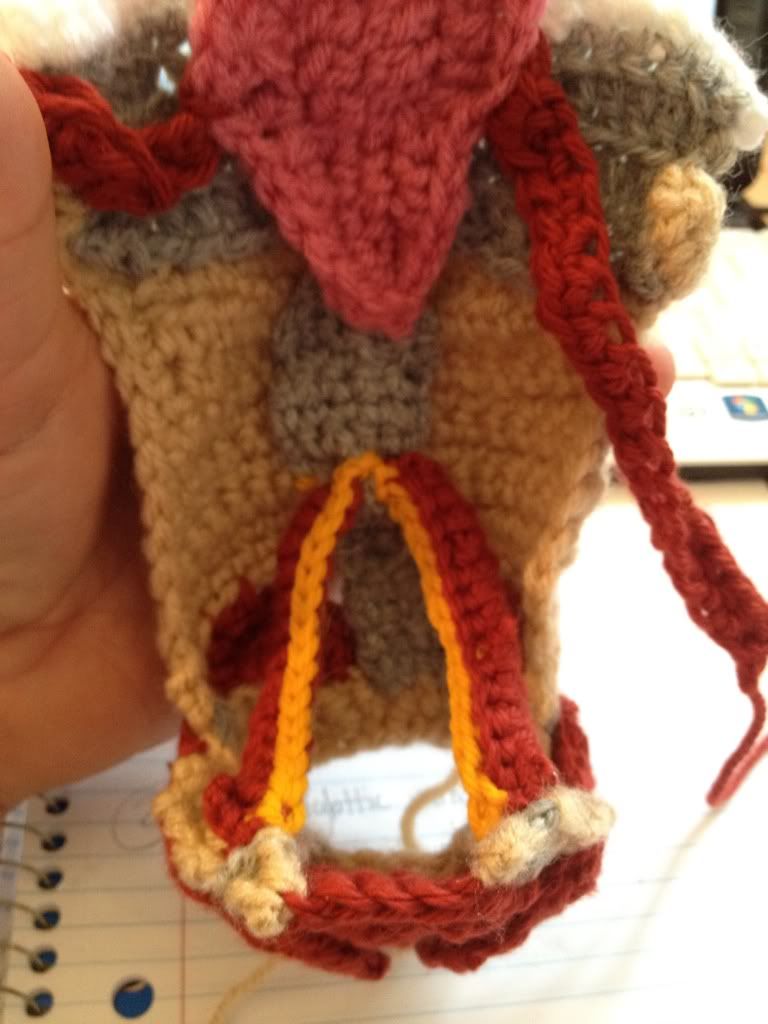 |
| I can even adduct and abduct my arytenoids to pretend ol' Yarnie is phonating! |
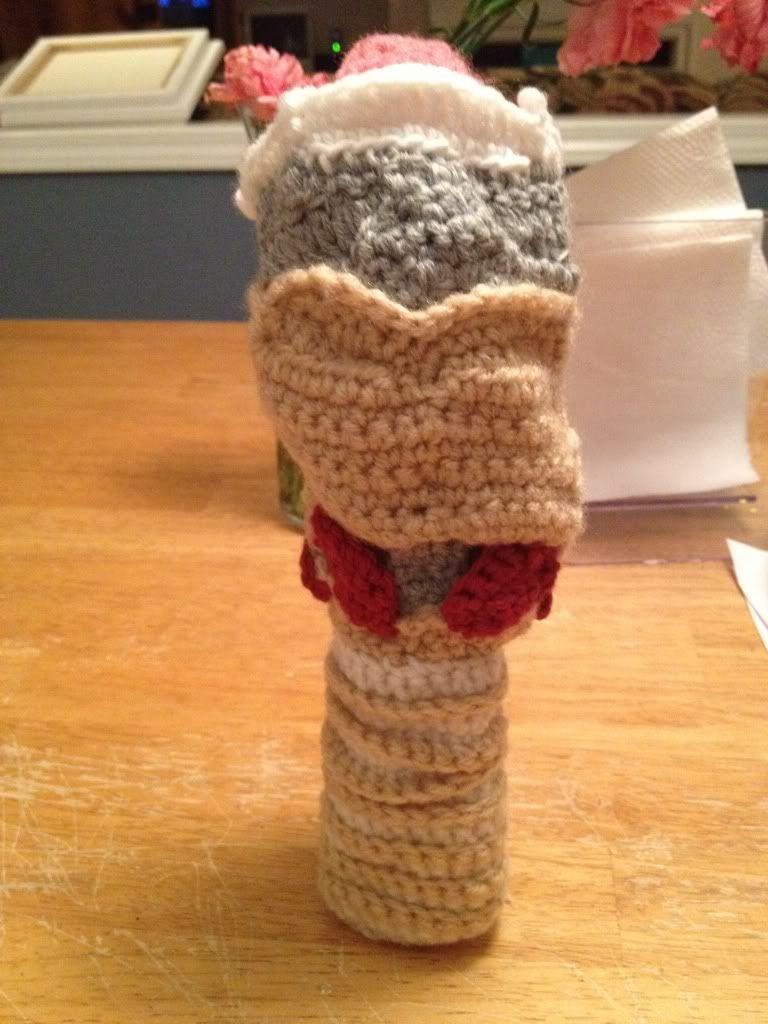 |
| Is it just me or does this look like a fancy ice cream cone concoction? |
I made an esophagus but I dont love it. Mainly because I dont really have a good place to stop at the top. The esophagus morphs into the pharynx which morphs into the nasal and oral cavities and I didnt have it in me to crochet all the way to the lips and nose. Seriously, do you know how long this took me?
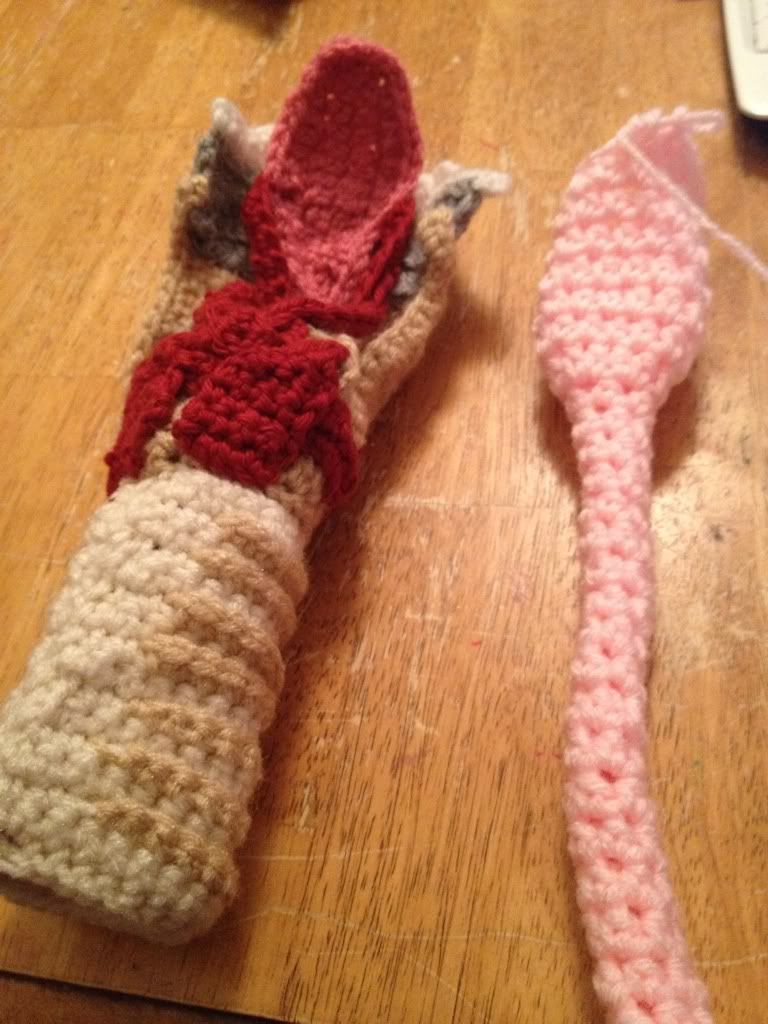 |
| Hey baby, how you doin'? Nice bolus. |
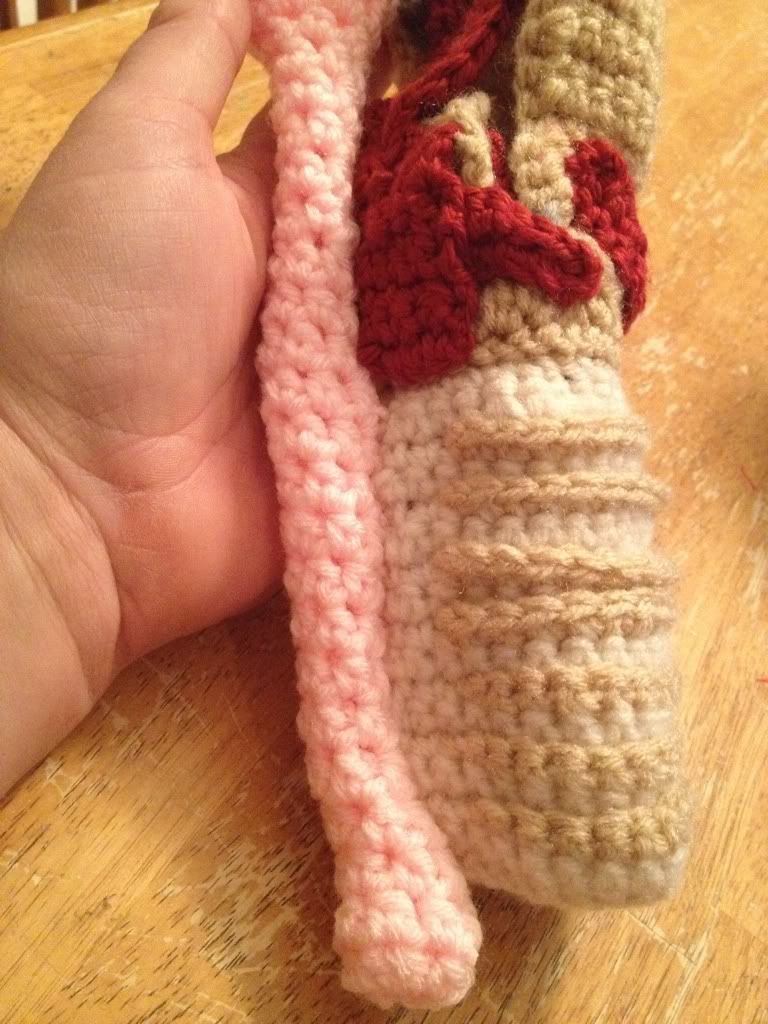 |
| And in real life, there would be all kinds of membranes separating these two star crossed organs from each other. |
And was it worth it? Heck yeah. I had a basic understanding of the structures of the larynx before this, but I never really understood exactly what the purpose of the epiglottis was, for example. Today, I used the model to demonstrate to my 6yr old how the epiglottis closes off the larynx to protect the airway during a swallow. And she totally got it! How cool is that?

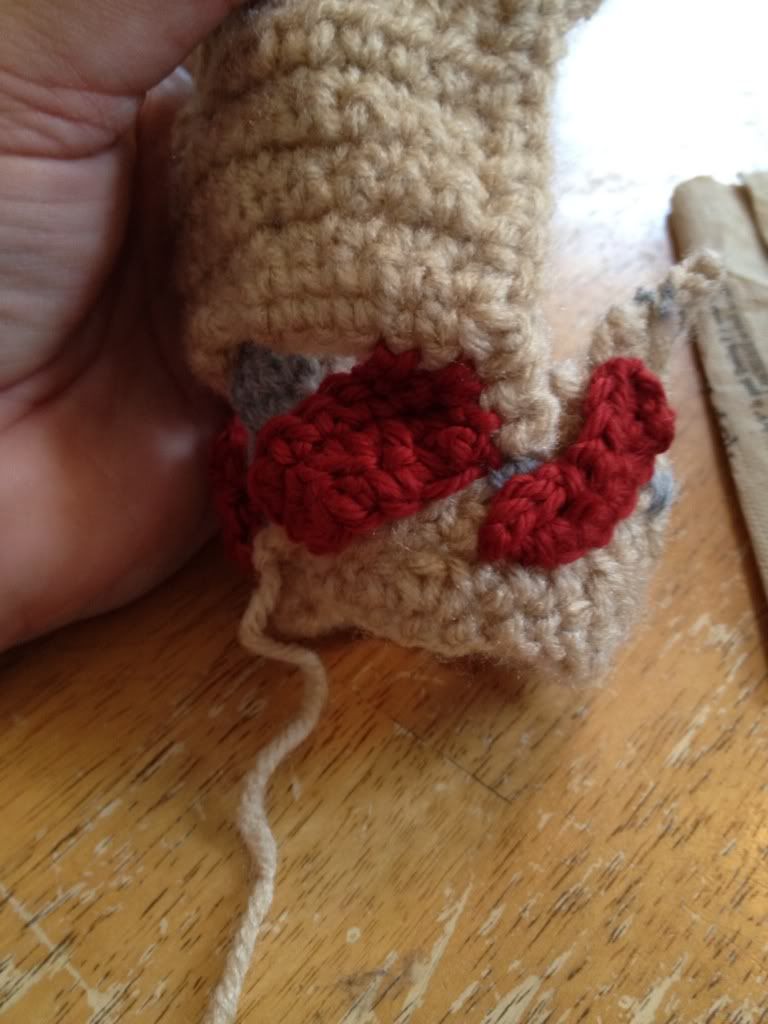


This project makes more sense to me than any text book. Thank you!!
ReplyDeletenice job and it is good for studing
ReplyDeletewhat did your professor/doctor say?
ReplyDeleteHow awesome is this? So glad you were able to explain it to your 6yo and to Me! :)
ReplyDeleteThis is great and I totally relate to you doing it. Thanks for the smiles during studying.
ReplyDeleteI copied this project for my vocal pedagogy class! We had to make a larynx in a creative way. Mine is nowhere near as good as yours.
ReplyDeleteMany many kudos to you! (from a speech pathologist, singing voice rehab-obsessive, and former anatomy teacher!)
ReplyDeleteSo I have to make a larynx for my voice disorders class, is there any chance you wrote a pattern for your pieces? I have never tried to freehand crochet so I'm a little nervous and any guidance you have would be greatly appreciated!
ReplyDeleteHi,
ReplyDeleteI LOVE this! Looks like this has already previously been asked but I don't see a response... any chance you wrote a pattern for this?
Please tell me their's a pattern for this!
ReplyDelete